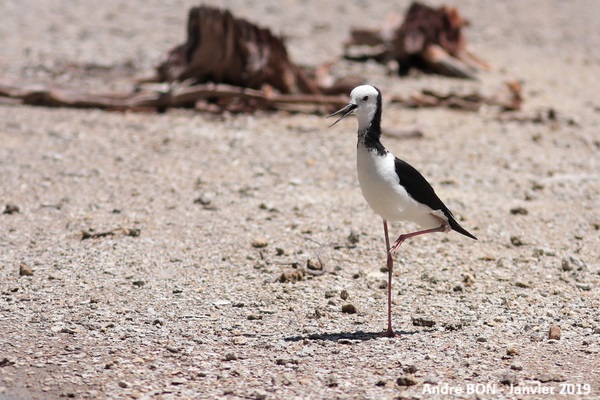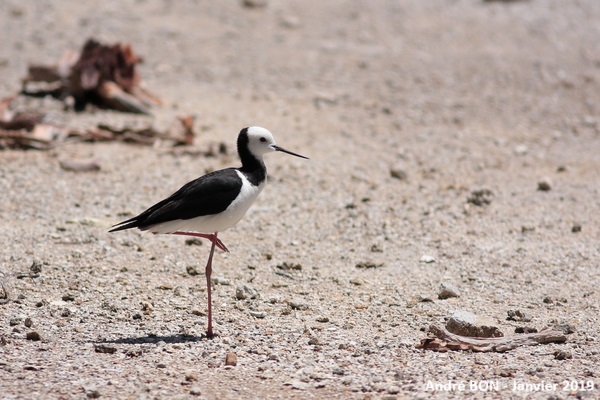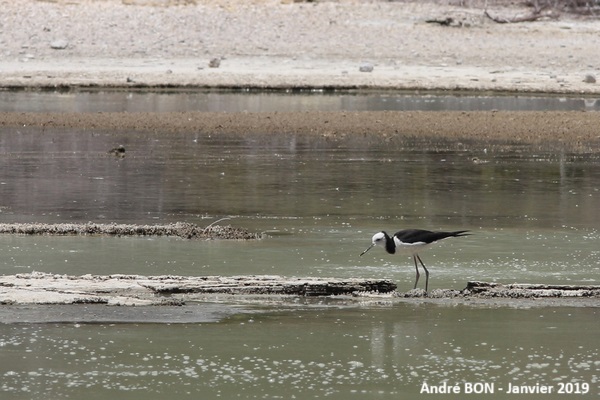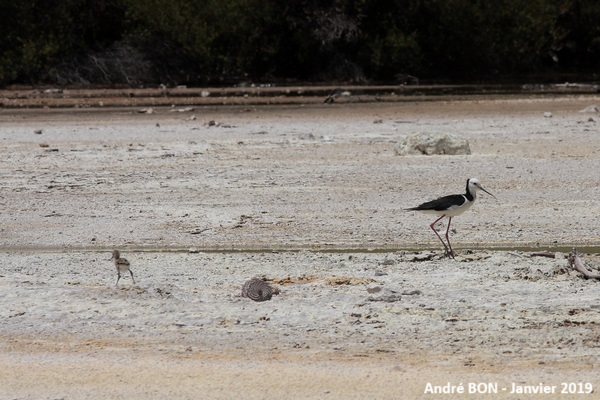




| Pied Stilt (Himantopus leucocephalus (Gould, 1837)) |





|
|
Scientific name: Himantopus leucocephalus (Gould, 1837) Common name: Pied Stilt Other names: White-headed Stilt. French name: Échasse d'Australie Order: Charadriiformes Family: Recurvirostridae Size: Body size: 33 to 40 cm; Weight: 135 to 290 g; Wingspan: 67 to 83 cm. Habitat: Proximity to shallow bodies of water, freshwater marshes and wet meadows, estuaries and sandy areas. Food: Aquatic invertebrates (crustaceans, worms, insect larvae) and terrestrial invertebrates (larvae, insects, spiders). Nesting: Pied Stilts nest in small colonies. The nest is a large cup of dry grass on the ground in a small depression near water. There are usually 3 to 4 eggs per clutch. Migration: Mainly sedentary. Some birds migrate to the Philippines, Borneo, Indonesia and India during the southern winter. Geographic area: Malaysia, Japan, Philippines, Indonesia, Papua New Guinea, Australia, New Zealand. |
Pied Stilts have long thin pink legs. The bill is long, straight, thin and black. The plumage is black and white with black wings, back and upper neck. A long black stripe extends across the back of the neck, from the nape to a half-collar at the base of the neck. This is the main difference from the Black-winged Stilt (Himantopus himantopus). Some consider the Pied Stilt as a subspecies of the Black-winged Stilt. |
| [To know more about the Pied Stilt] [Next picture] [Top] |

|
The Waiotapu geothermal area is truly magnificent. It features brightly coloured bodies of water as well as areas of shallow water that are favourable to the presence of Pied Stilts. |
| [To know more about the Pied Stilt] [Next picture] [Previous picture] [Top] |

|
This Pied Stilt has positioned itself here to watch the crowd of tourists visiting the geothermal area. Fortunately, they are forced to follow a well-defined route for their safety and for the peace of the birds watching them. |
| [To know more about the Pied Stilt] [Next picture] [Previous picture] [Top] |

|
Looking for food. |
| [To know more about the Pied Stilt] [Next picture] [Previous picture] [Top] |

|
The area is also apparently suitable for nesting. |
| [To know more about the Pied Stilt] [Previous picture] [Top] |

|
With a little patience and stillness I had the pleasure of seeing a juvenile pass nearby. |